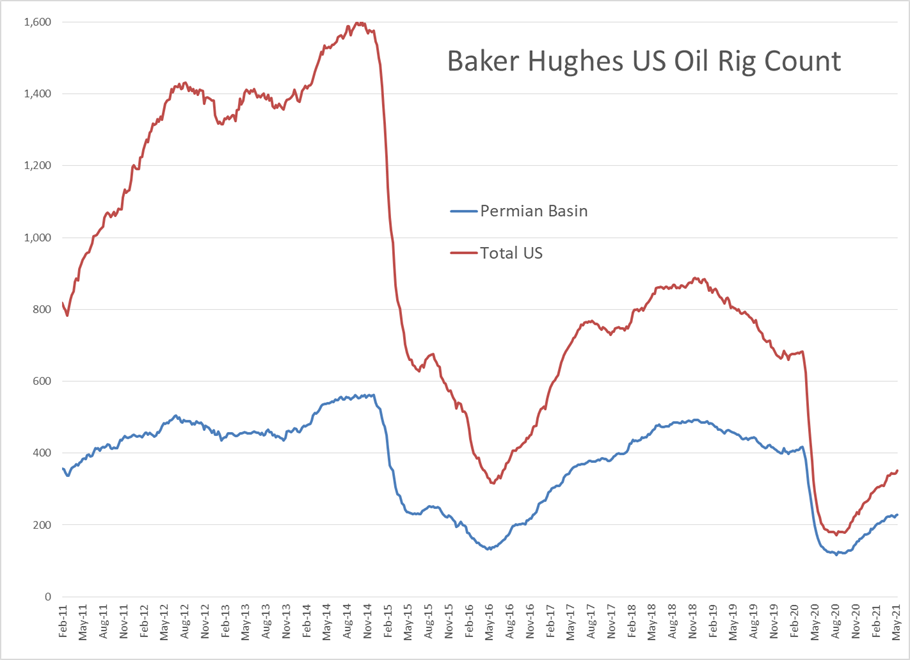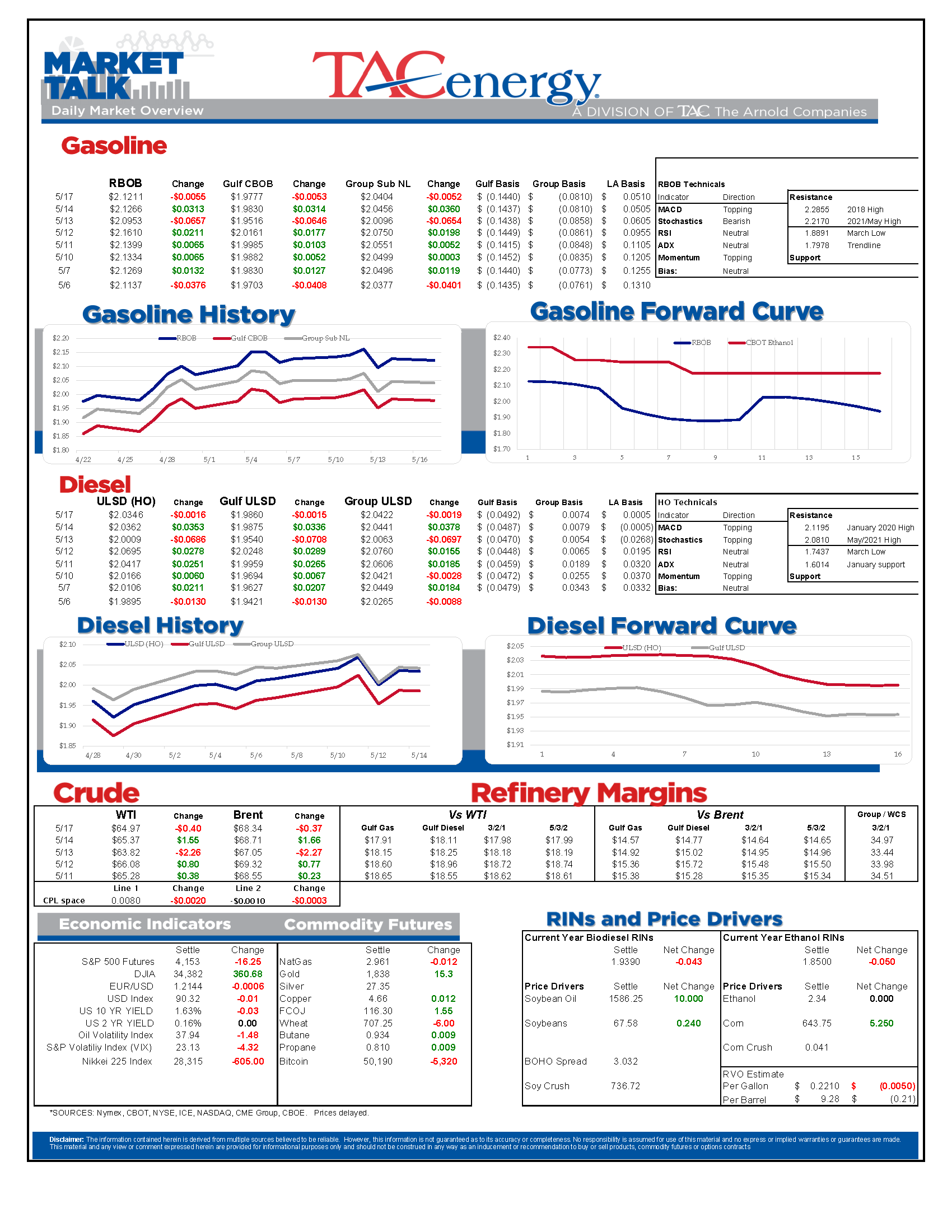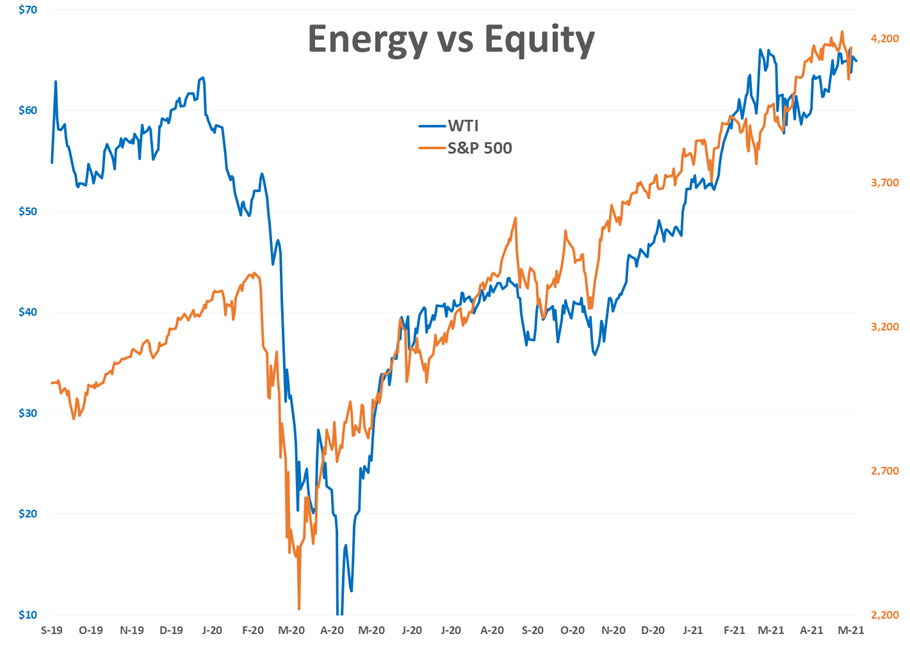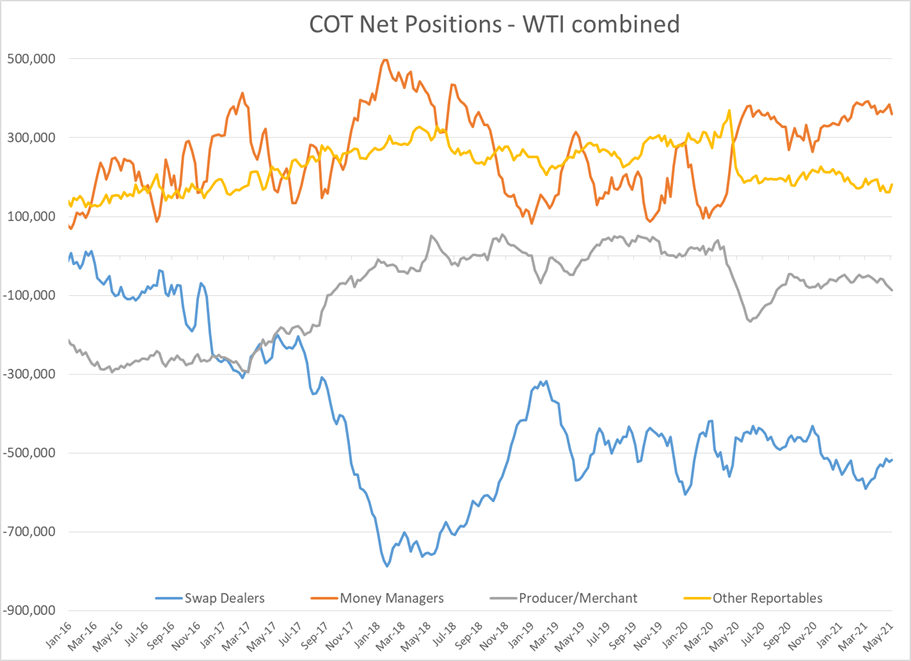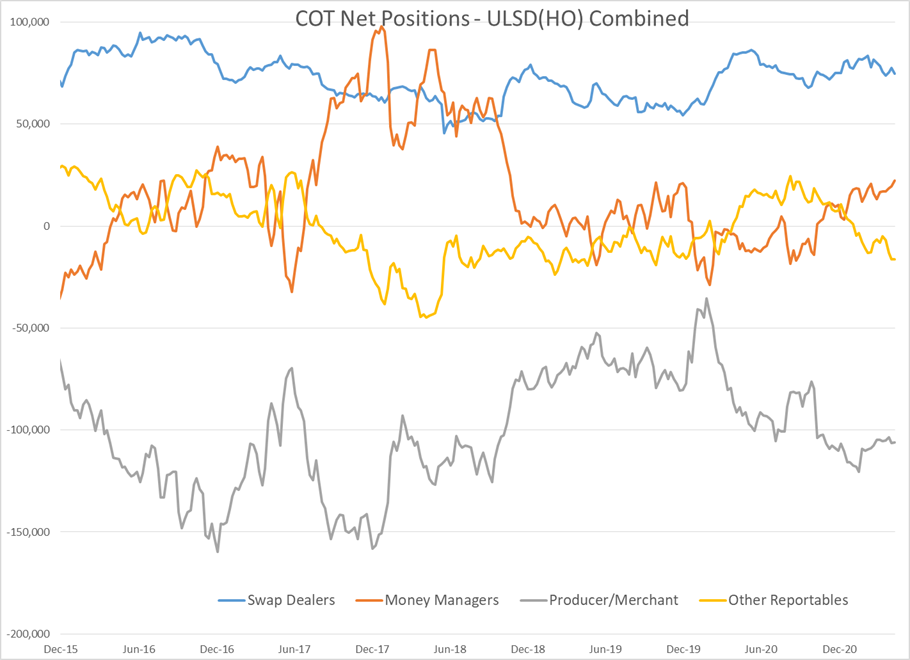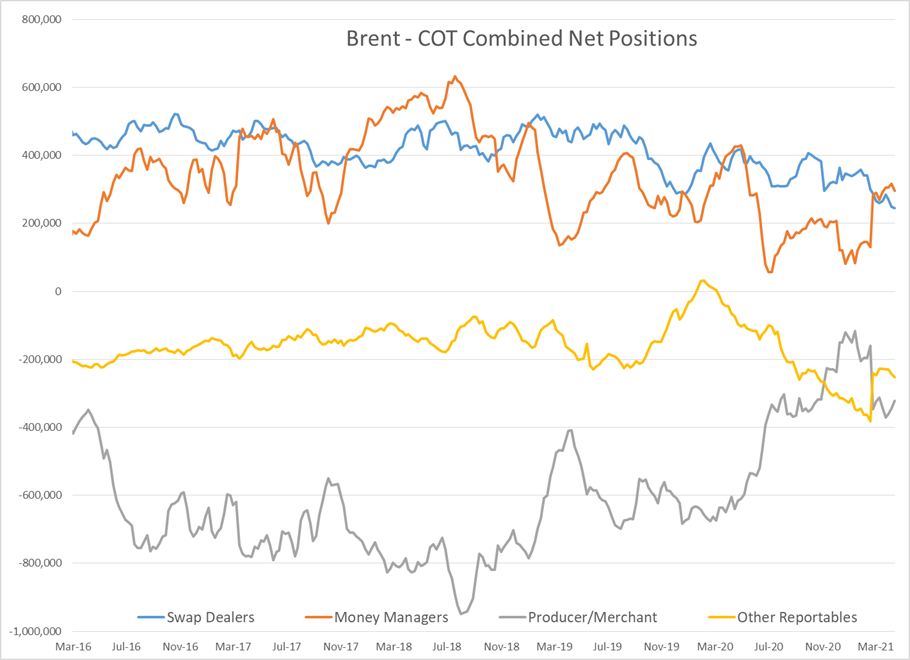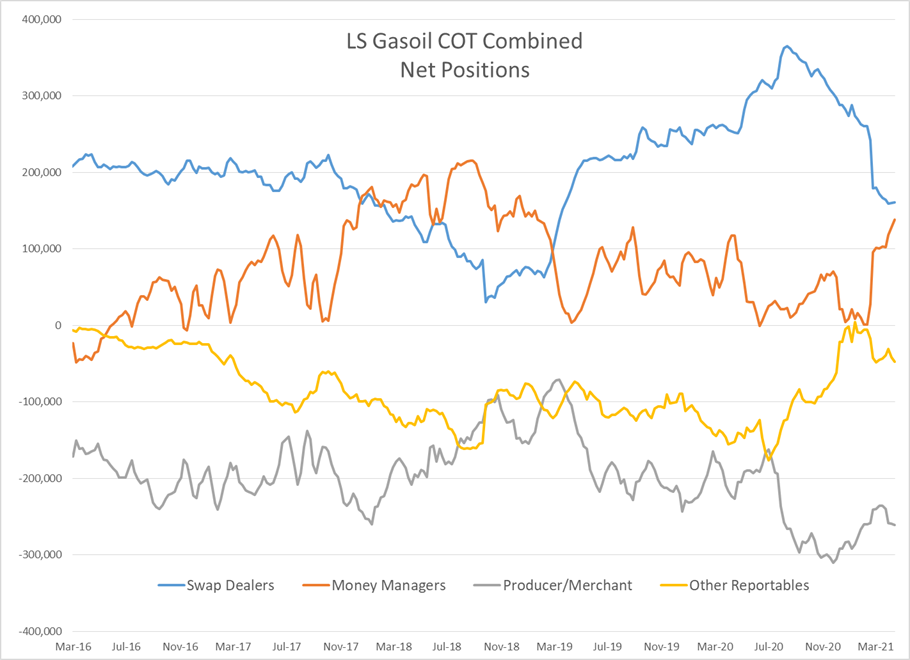Pipeline Fears Ending As Inflation Fears Spread

Energy and equity futures are both pointing modestly lower to start a new week, as pipeline fears are ending, and inflation fears are spreading.
Colonial’s restart continues to progress on schedule, with scheduling systems now back online, in addition to the operating systems that start up last week.
While it will still take several more days to fully alleviate the crunch, improvement is seen all across the region with allocation percentages increasing and outages decreasing from Louisiana to Pennsylvania. Now that the shortage is in the rearview mirror, the focus will turn to what will come next as this situation was a rude awakening of the threats posed to infrastructure, even as the hackers responsible are fleeing to try and avoid the weight of the U.S. coming down on them. New reporting requirements for pipeline systems seems to be a popular prediction for a way that the industry will be forced to change, and will likely come with unintended consequences that will make operating those pipeline systems more challenging.
One painful little detail for renewable fuel proponents who wasted no time last week suggesting that ethanol could help alleviate the supply crunch if the EPA would only allow E15 blends: several supply terminals across multiple states cited a shortage of ethanol for compounding the product shortages as railcar shipments simply couldn’t keep up with the rapidly shifting demand patterns across the region.
Money managers continue to have mixed feelings about energy contracts, with WTI, Brent and RBOB all seeing a drop in the net length held by large speculators last week via new short positions and liquidating old long positions, while ULSD and Gasoil contracts saw their net length increase. The fact that RBOB length didn’t increase as of last Tuesday – when the outcome of the Colonial shutdown was still very much in doubt – suggests the bandwagon jumpers in the hedge fund community are either cautious about gasoline prices, or have lost interest as other commodities seem to be an easier trade as long as inflation is making headlines.
Eight more oil drilling rigs were put to work last week according to Baker Hughes weekly report, the largest gain in nearly two months. The location of those drilling rigs is a bit of a mystery as four of the eight rigs come in the “other” category since they weren’t in the 14 largest basins tracked in the report, and the state by state count is offset by a drop in the natural gas rig count. The fact that the build is coming outside of the Permian (which accounts for more than half of all drilling activity) or one of the other well-known basins, suggests the price environment is good enough to encourage some companies to reach further in their operations.
As predicted last week, the EPA has ordered the St. Croix (island, not river) refinery to cease operations after a string of mishaps rained oil and other chemicals on the local community. Keeping that plant offline will make other Atlantic basin producers breathe a small sigh of relief as it will keep some of the excess capacity out of that market, and perhaps extend the operational life of another facility that would have had to close otherwise.
Speaking of refinery closures, Australia’s government is committing more than $2 billion to keep its last two refineries operating, citing national security concerns if the country is forced to import all of its fuel. This is a dilemma being faced around the world as country’s have suddenly found themselves with traditional refineries closing due to weak economics and public perception, but without a solution to keep their economies rolling without them, other than being forced to buy fuel from countries that may not like them much.
Click here to download a PDF of today's TACenergy Market Talk.
Latest Posts
Energy Markets Rally Again Thursday After A Choppy Wednesday Session
Week 16 - US DOE Inventory Recap
Energy Markets Trading Quietly In The Red As Ethanol Prices Rally To Five-Month High
The Struggle For Renewable Producers Continues As A Rapid Influx Of Supply And Crashing Credit Prices Make Biodiesel
Social Media
News & Views
View All
Energy Markets Rally Again Thursday After A Choppy Wednesday Session
Energy markets are trying to rally again Thursday after a choppy Wednesday session. RBOB gasoline futures are leading the push higher, on pace for a 3rd consecutive day of gains after finding a temporary floor Tuesday and have added 12 cents from those lows.
Equity markets are pointing sharply lower after a weak Q1 GDP estimate which seems to have contributed to a pullback in product prices over the past few minutes, but don’t be surprised if the “bad news is good news” low interest rate junkies start jumping in later on.
The DOE’s weekly report showed sluggish demand for gasoline and diesel, but inventory levels in most markets continue to follow their typical seasonal trends. Refinery runs held fairly steady last week with crude inputs down slightly but total gross throughputs up slightly as most facilities are now back online from a busy spring maintenance season and geared up for peak demand this summer.
Propane and propylene exports spiked to a record high north of 2.3 million barrels/day last week, which demonstrates both the US’s growing influence on global product markets, and the steady shift towards “other” products besides traditional gasoline and diesel in the level of importance for refiners.
The EIA acknowledged this morning that its weak diesel consumption estimates reflected the switch to Renewable Diesel on the West Coast, although they did not provide any timeline for when that data will be included in the weekly survey. The agency acknowledged that more than 4% of the total US consumption is now a combination of RD and Biodiesel, and that number is expected to continue to grow this year. This morning’s note also suggested that weak manufacturing activity was to blame for the sluggish diesel demand across the US, while other reports suggest the freight recession continued through Q1 of this year, which is also contributing to the big shift from tight diesel markets to oversupplied in several regions.
Valero kicked off the Q1 earnings releases for refiners with solid net income of $1.2 billion that’s a far cry from the spectacular earnings north of $3 billion in the first quarter of 2023. The refining sector made $1.7 billion, down from $4.1 billion last year. That is a pattern that should be expected from other refiners as well as the industry returns to a more normal market after 2 unbelievable years. You wouldn’t guess it by looking at stock prices for refiners though, as they continue to trade near record highs despite the more modest earnings.
Another pattern we’re likely to see continue with other refiners is that Renewable earnings were down, despite a big increase in production as lower subsidies like RINs and LCFS credit values sting producers that rely on those to compete with traditional products. Valero’s SAF conversion project at its Diamond Green joint venture is progressing ahead of schedule and will give the company optionality to flip between RD and SAF depending on how the economics of those two products shakes out this year. Valero also shows part of why refiners continue to disappear in California, with operating expenses for its West Coast segment nearly 2X that of the other regions it operates in.

Week 16 - US DOE Inventory Recap

Energy Markets Trading Quietly In The Red As Ethanol Prices Rally To Five-Month High
Energy markets are trading quietly in the red to start Wednesday’s session after a healthy bounce Tuesday afternoon suggested the Israel-Iran-linked liquidation had finally run its course.
There are reports of more Ukrainian strikes on Russian energy assets overnight, but the sources are sketchy so far, and the market doesn’t seem to be reacting as if this is legitimate news.
Ethanol prices have rallied to a 5-month high this week as corn and other grain prices have rallied after the latest crop progress update highlighted risks to farmers this year, lower grain export expectations from Ukraine, and the approval of E15 blends this summer despite the fact it pollutes more. The rally in grain and renewables prices has also helped RIN values find a bid after it looked like they were about to test their 4-year lows last week.
The API reported small changes in refined product inventories last week, with gasoline stocks down about 600,000, while distillates were up 724,000. Crude oil inventories increased by 3.2 million barrels according to the industry-group estimates. The DOE’s weekly report is due out at its normal time this morning.
Total reported another upset at its Port Arthur refinery that’s been a frequent flier on the TCEQ alerts since the January deep freeze knocked it offline and damaged multiple operating units. This latest upset seems minor as the un-named unit impacted was returned to normal operations in under an hour. Gulf Coast basis markets have shrugged off most reports of refinery upsets this year as the region remains well supplied, and it’s unlikely we’ll see any impact from this news.
California conversely reacted in a big way to reports of an upset at Chevron’s El Segundo refinery outside of LA, with CARBOB basis values jumping by more than a dime. Energy News Today continued to show its value by reporting the upset before the flaring notice was even reported to area regulators, proving once again it’s ahead of the curve on refinery-related events. Another industry news outlet meanwhile struggled just to remember where the country’s largest diesel seller is located.
Click here to download a PDF of today's TACenergy Market Talk
